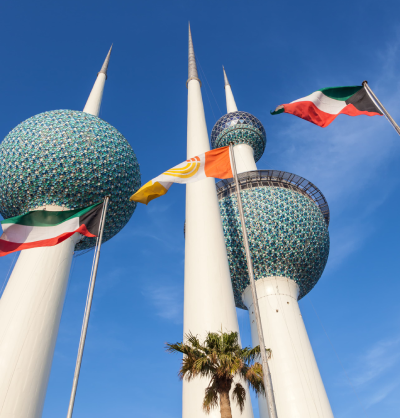SAUDI ARABIA‘s privatisation of football clubs is causing ripples in the Middle East’s football landscape and signalling its international ambitions. The move is expected to have far-reaching implications for the region, with significant commercial and sporting consequences. The recent signing of Cristiano Ronaldo by Riyadh club Al-Nassr has already demonstrated the immediate impact of this strategy. Ronaldo — widely regarded as one of the greatest players in the history of the sport, and among the most popular people on Earth — instantly boosted Al-Nassr’s Instagram following from under one million to almost 15 million. The club’s success also extended to the sale of broadcasting rights to 36 countries. Following this, Al-Ittihad secured Karim Benzema, the current Ballon d’Or holder, and N’Golo Kante from Chelsea, further solidifying the trend of high-profile signings in the Saudi Pro League.
These developments have captured the attention of neighbouring countries and sporting rivals who are carefully observing Saudi Arabia’s rise to prominence. Saudi Arabia’s league already enjoys unparalleled popularity in the region, and with the addition of renowned players, the clubs are poised to become even stronger. Excitement among football fans in nearby countries is growing as they anticipate the opportunity to watch legendary players in action, leading to an anticipated increase in sporting tourism to Saudi Arabia.
Saudi Arabia’s ascendancy in football is transforming the country into a preferred destination for players looking to move to the region. The injection of funding from the kingdom’s sovereign wealth fund into the Saudi Pro League has attracted the attention of world-class stars, making it more challenging for clubs in other countries to secure them. A key factor contributing to Saudi Arabia’s football revolution is the recent privatisation of the country’s four biggest clubs: Al-Ittihad, Al-Ahli, Al-Hilal, and Al-Nassr, by the Public Investment Fund (PIF). This move aims to enhance the commercial performance of Saudi Pro League clubs, generating increased revenue through broadcasting, sponsorship, commercial deals, merchandising and potential inward investment. The ultimate goal is for these clubs to join the ranks of global football powerhouses like Manchester United, Real Madrid and Bayern Munich, ranking among the top revenue-generating clubs worldwide.
The privatisation plan, spearheaded by Saudi Arabia’s Crown Prince Mohammed bin Salman (colloquially known as MBS), is mainly focused on football clubs and aims to attract investment and foster development. This strategy allows companies and development agencies to invest in clubs or take over ownership, opening doors for enhanced commercial growth and sporting excellence. According to a report by the state news agency SPA, MBS intends to revolutionise the revenue generated by the Saudi Professional League. By 2030, the aim is to increase the league’s annual revenue from $120 million to an impressive $480 million. This revenue surge is anticipated to propel the league’s market value to over $2.1 billion, creating a sustainable and thriving football industry in Saudi Arabia.
The privatisation plan coincides with Saudi Arabia’s bid to co-host the FIFA World Cup in 2030, a testament to the country’s commitment to becoming a global football powerhouse. Hosting the prestigious tournament would not only elevate Saudi Arabia’s profile in the sporting world but also further stimulate the growth and investment in its football infrastructure. The bid demonstrates Saudi Arabia’s determination to position itself as a leading destination for world-class football events, fostering a thriving football culture in the country.
While these plans may seem ambitious, significant investment in sports has proven to bring rapid change. This was exemplified by the PIF’s involvement in the golf industry, as the LIV Golf series merged with the prestigious PGA Tour. The commercial implications of Saudi Arabia’s football aspirations extend beyond its borders, potentially impacting football in the wider Middle East and North Africa (MENA) region. Concerns have been raised about the potential crowding-out effect, as Saudi Arabia monopolises lucrative deals, leaving other countries struggling to offer similar returns to sponsors, broadcasters, and investors. However, Saudi Arabia’s rise as a football powerhouse presents lucrative opportunities for players from the region. Already, Egyptian internationals Ahmed Hegazi and Tarek Ahmed played instrumental roles in Al-Ittihad’s league championship victory in May. Other regional stars, including Riyad Mahrez from Algeria and Hakim Ziyech and Yassine Bono from Morocco, have been linked to potential moves to Saudi clubs.
Furthermore, the rise of Saudi football could also benefit countries that traditionally do not export talent overseas. Players from Iraq and Iran, for example, may find attractive opportunities in Saudi clubs, thanks to rising footballing standards and competitive salaries. Iranian clubs, in particular, face economic challenges due to US-led sanctions, making the Saudi league an appealing option.
***
As Saudi Arabia continues to attract the best international talent, and establish itself as the most-watched league in the region, it stands to benefit tremendously. Furthermore, the rise in football standards within the country could address the long-standing weakness of local players rarely venturing overseas, ultimately preparing them for international exposure. National football associations in the region must pay attention to Saudi Arabia’s strategic vision and take appropriate action, as ignoring these developments could leave them playing catch-up for years to come.








